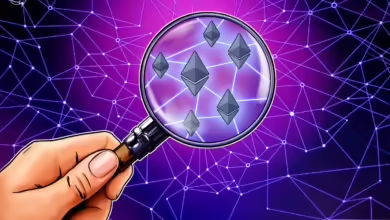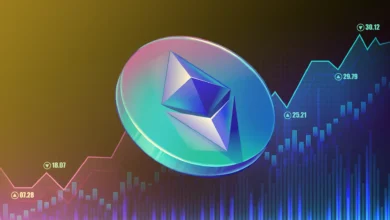Ethereum developers are ready to split the next major blockchain upgrade, “Pectra,” into two phases
The latest Ethereum upgrade, partially named "Electra," is one of the "Seven Sisters" in the star cluster known as the Pleiades, depicted here in an artistic rendering within a ring of circles. (Wikipedia, modified by CoinDesk using PhotoMosh)

Only six months have passed since the last major upgrade of Ethereum, the dominant smart contract blockchain. However, there are many developer priorities for what should be done next, and it is becoming increasingly clear that they cannot all happen at once.
Therefore, Ethereum developers are currently considering splitting the anticipated upgrade, Pectra, into two parts.
Pectra was on track to become the largest hard fork of Ethereum to date (in this context, a hard fork is the technical term for a software upgrade on a blockchain). However, some developers argue that the entire package of new features has become unwieldy, and they have expressed their desire to split it due to its complexities and the risk of overextending too quickly.
During a call with all core developers last week, Ethereum developers began to toy with the idea that splitting the hard fork into two parts might be feasible.
Parithosh Jayanthi, an EF DevOps engineer and one of the main developers advocating for the split, told CoinDesk via Telegram, “We are discussing splitting it into two forks, mainly to reduce the risk of bugs and to allow for quicker deployment of both forks.”
According to a report by Christian Kim, Vice President of Research at Galaxy Digital, the first part of Pectra includes Ethereum Improvement Proposals (EIPs) such as EIP-7702, which aims to improve wallets—written by Ethereum founder Vitalik Buterin in 2018. The second part includes EIPs aimed at upgrading the Ethereum Virtual Machine, known as EOF.
On Thursday, Ethereum developers will decide in their upcoming call with the All Core Developers agreement whether to split Pectra into two forks.
Potential Downsides
If developers agree to this split, the first package could be rolled out in early February 2025.
Ethereum developers have not strongly opposed the potential for a fork split, although Insgar Dietrichs, an EF researcher, told CoinDesk that one downside could be pushing EIP-7594 or PeerDAS into the second package. The goal of PeerDAS is to improve data availability on Ethereum, and delaying the implementation of this feature may result in slightly higher costs for layer 2 blockchains for now.
Dietrichs told CoinDesk, “PeerDAS is very important to ensure that L2s have more room to grow future throughput, so the sooner we send it out, the more confident we are that we can support any L2 output that may be needed next year. Right now, even before PeerDAS, we still have a little room. So hopefully, it won’t matter at all. In the worst case, L2s will have slightly higher costs again for a few months while we wait for the second half of the Pectra fork.”
Dietrich said, “Ultimately, I think the split is still the right decision.”
According to Kim’s report, Alex Stokes, an EF researcher, said in last week’s call, I think everyone agrees that this is a really big fork, so a natural thing to do is to split it into two parts. Generally, smaller forks carry less risk.





